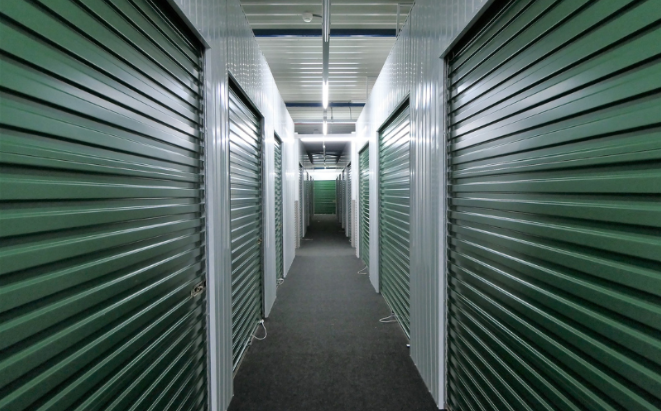Securing belongings in a storage locker requires proper packing techniques and organisation strategies. Damage, disorganisation, and unnecessary clutter become avoidable with a structured approach. Follow these steps to keep items secure and accessible in a storage locker in Singapore.
Selecting Suitable Packing Materials
Using quality packing materials ensures better protection. Sturdy boxes, plastic bins, and vacuum-sealed bags help prevent moisture damage. Wrapping fragile items with bubble wrap or packing paper adds cushioning. Labelling boxes allows for easier retrieval. Choosing stackable storage bins optimises space usage in a self-storage space in Singapore.
Clothing, documents, and electronic devices need protection against humidity. Placing silica gel packets inside containers absorbs excess moisture. Using waterproof covers for furniture and appliances prevents mould growth. Items with delicate surfaces, such as wooden furniture or artwork, benefit from protective padding.
Organising Items for Accessibility
Arranging belongings systematically prevents unnecessary handling and possible damage. Placing heavier boxes at the bottom and lighter ones on top maintains balance. Using shelving units maximises vertical space while keeping frequently used items accessible. Categorising items based on function or season simplifies retrieval.
Labelling boxes with specific descriptions instead of generic terms saves time. Colour-coded labels further improve organisation. Keeping an inventory list ensures accountability for stored items. Digital documentation, including photos and itemised lists, provides an added layer of reference.
Ensuring Proper Packing for Fragile Items
Breakable items require careful handling and secure wrapping. Using double-walled boxes for fragile objects enhances protection. Filling empty spaces inside boxes with packing peanuts or crumpled paper minimises movement. Wrapping individual glassware, ceramics, and electronics in bubble wrap prevents impact damage.
Storing mirrors and framed artwork vertically with corner protectors reduces breakage risk. Wrapping cords separately and using original packaging for electronics maintains their integrity. Labelling fragile boxes with “Handle with Care” ensures extra caution when moving them inside a storage locker rental.
Preventing Damage from Environmental Factors
Humidity and temperature fluctuations impact stored belongings. Choosing a self-storage rental facility with climate control mitigates risks for sensitive items like wooden furniture, documents, and electronics. Elevating boxes off the ground with pallets prevents contact with potential water spills.
Using dust covers and airtight containers for clothing and upholstery keeps them clean. Leather and fabric items stay in better condition with breathable covers. Keeping storage units ventilated prevents musty odours. Dehumidifiers or moisture absorbers help regulate humidity levels.
Maximising Space Efficiently
Optimising available space reduces clutter and ensures efficient use of a storage locker rental. Disassembling furniture before storage creates additional room. Stacking boxes neatly with heavier ones at the bottom prevents collapse. Storing items inside drawers, suitcases, and hollow furniture compartments conserves space.
Keeping aisles within the unit allows easy access. Using hooks or pegboards on storage unit walls keeps smaller items organised. Vacuum-sealed bags reduce the bulkiness of clothing and bedding. Shelving units provide structured stacking while reducing strain on lower boxes.
Securing Valuables and Essential Items
Keeping high-value items secure within a self-storage rental prevents loss. Using locked containers or safes adds an extra layer of protection. Placing valuable possessions at the back of the unit reduces visibility. Keeping an updated inventory with photographs helps track stored belongings.
Choosing a facility with robust security features, including CCTV surveillance, gated access, and individual locks, enhances protection. Ensuring proper insurance coverage for stored items provides additional security. Storing essential documents in fireproof and waterproof containers prevents irreparable damage.
Regular Maintenance and Check-Ups
Inspecting stored items periodically ensures their condition remains intact. Rotating seasonal items reduces unnecessary clutter. Checking for signs of moisture, pests, or deterioration prevents long-term damage. Wiping down surfaces and airing out the unit keeps belongings in optimal condition.
Repacking boxes with reinforced tape when necessary maintains their durability. Reorganising and decluttering periodically makes retrieval easier. Ensuring labels remain legible avoids confusion during retrieval. Updating inventory lists whenever changes occur keeps records accurate.
Conclusion
Packing and storing items safely in a storage locker in Singapore requires careful planning and proper organisation. Using quality packing materials, maintaining accessibility, and preventing environmental damage ensures belongings remain intact. Keeping valuables secure and performing regular maintenance further enhances storage efficiency.
Visit or contact SpaceHub for storage facility rental in Singapore that provides secure and accessible storage solutions.




